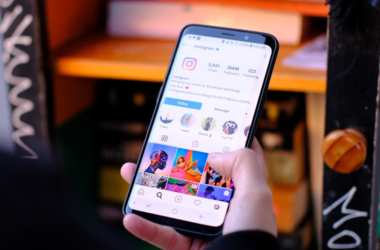- Tension: Small brands want to engage audiences with authenticity, but celebrity-level influencer marketing feels inaccessible and misaligned.
- Noise: Media narratives focus on million-dollar celebrity endorsements, overshadowing the power and accessibility of micro-influencers.
- Direct Message: Influencer marketing isn’t about scale—it’s about fit. Micro-influencers often deliver stronger ROI, deeper trust, and more meaningful reach.
To learn more about our editorial approach, explore The Direct Message methodology.
When headlines spotlight influencer deals worth six or seven figures, most small businesses tune out.
Kim Kardashian West earning $500,000 for a single Instagram post or Kylie Jenner commanding $1 million may be impressive—but it also seems wildly out of reach.
These stories grab attention, but they distort the truth: influencer marketing isn’t just for the elite. And it never has been.
For businesses operating without a celebrity budget, there’s a more powerful, cost-effective solution hiding in plain sight: micro-influencers.
Where hype meets hesitation
Celebrity endorsements dominate the public imagination, but they do little for the average brand manager trying to reach real customers. The assumption is clear: if you can’t pay big, you can’t play at all.
But that assumption misses the point. Micro-influencers—individuals with highly engaged, niche audiences—often outperform bigger names in terms of authenticity, engagement, and influence-per-dollar. These influencers feel accessible. Trustworthy. Human.
Still, many businesses hesitate. Influencer pricing remains opaque, and misinformation runs rampant. Brands assume it’s either a vanity play or prohibitively expensive.
Meanwhile, micro-influencers undervalue or overvalue themselves without standardized benchmarks.
What we’re left with is an ecosystem rich with opportunity but clouded by confusion. Everyone wants clarity—and that’s exactly what this article aims to offer.
The clarity that changes everything
Influencer marketing isn’t about scale—it’s about fit. Micro-influencers often deliver stronger ROI, deeper trust, and more meaningful reach.
Reframing value: the true impact of micro-influencers
If you define success as clicks, likes, or brand lift, micro-influencers can deliver that. But their real advantage lies in the specificity of their influence. They often speak to a community they live in—not above. Their endorsements feel more like a friend’s recommendation than an ad.
And the costs? Far lower than most assume. Small creators—those with highly engaged but modest followings—can earn anywhere from $100 to $2,000 per post, often supplemented by brand perks, free products, or exclusive event access.
Ryan Detert, CEO of Influential, shared that influencers with up to 50,000 Instagram followers can earn $500 to $2,000 per campaign. For 50,000 to 100,000 followers, the range climbs to $1,000 to $4,000. Above that? $4,000 and up—still a fraction of what macro-influencers charge.
Maria Sipka, co-founder of Linqia, offered similar numbers. Influencers with under 50,000 followers typically earn $300 to $800. For those with more than 100,000 followers, $2,000 is a starting point.
These payouts aren’t speculative. They’re grounded in algorithmic models that measure not just audience size, but relevance and click-through performance.
As Sipka notes, “No influencer has 100% real followers and engagements” due to bots. Her company pays based on validated clicks—a shift toward outcome-based pricing.
This isn’t about paying for presence. It’s about paying for proof.
Expanding reach through smarter partnerships
Beyond the numbers, brands should consider the ripple effects of working with micro-influencers:
- Content creation: Influencers are storytellers. Their content often performs better than brand-created posts.
- Audience targeting: Micro-influencers speak directly to defined segments—regional, interest-based, or demographic.
- Brand safety: With proper vetting, partnerships can reflect shared values, not just shared audiences.
It’s not without challenges. Disclosure, brand alignment, and clear deliverables matter. But when done right, the results often exceed what paid ads alone can deliver.
The real shift? Moving from broadcast thinking to networked trust.
Building long-term impact with authentic creators
The influencer marketing economy doesn’t belong only to celebrities. It belongs to creators who have earned credibility in their communities. For brands with limited budgets but strong identities, micro-influencers aren’t second-best. They’re the smart play.
In an age where audiences crave connection and credibility over polish and reach, the most valuable endorsement isn’t the loudest—it’s the most trusted. And that trust doesn’t require millions of followers. It just requires the right message from the right voice.
Micro-influencers have that voice. Brands just need to listen—and invest accordingly.
But there’s also an opportunity here that goes beyond transactional partnerships. When brands invest in long-term relationships with micro-influencers, they begin to build something stronger than awareness: community.
Micro-influencers can become brand ambassadors not just for campaigns, but for the life of the brand—bringing credibility to launches, loyalty to product lines, and feedback to strategy.
That’s especially important in a landscape where authenticity isn’t a buzzword—it’s a buying trigger. Consumers are more likely to trust brands that are recommended by someone they follow and admire, particularly when that endorsement comes from a consistent, values-aligned source.
So while the media continues to obsess over the biggest influencer paydays, the smart money is moving elsewhere: toward smaller creators with deeper roots and sharper relevance. In this space, influence isn’t just something you buy—it’s something you build together.
The takeaway? Don’t underestimate the small creator. In the trust economy, they might just be your most powerful ally.






